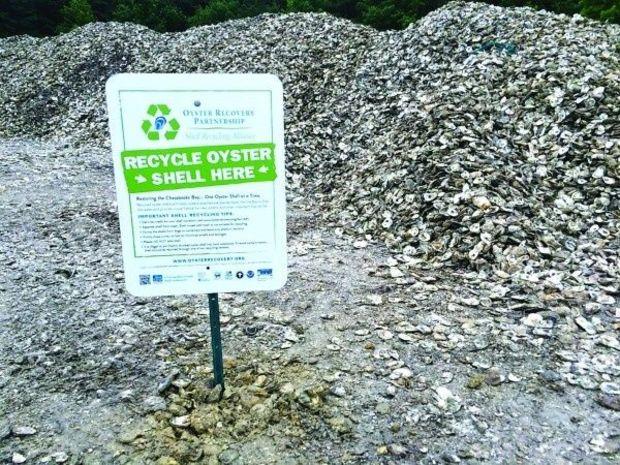Passing under the Kent Narrows Bridge, a big green boat pulled in behind us, obviously a working boat but not the typical waterman’s boat with the low freeboard and wide working area. We finally got to see the side and it said Oyster Recovery Project.

Stores and restaurants around the Chesapeake collect post-consumer oyster shells intended to create homes for new oysters; this is the other end of oyster restoration in action. Here are some of the reasons why we go to all this trouble:
1. With an adult oyster’s capacity to filter 25-50 gallons of water a day, these guys are some of the most diligent little employees working for Chesapeake Bay restoration. The oyster population has been reduced to just one percent of its historic population, which had the ability to filter the whole bay in just five days. We get the name of the Bay from the Native Americans who lived around it. In Algonquin, Chesapeake means “Great Shellfish Bay.”
2. Oceans and waterways are experiencing acidification. With atmospheric carbon concentration higher, waters absorb more carbon and become more acidic. All shells are vulnerable to thinning and depletion due to this acid. Many states are working to monitor this and research ways to confront this acidification.
3. Depending on the water oysters grow in, they all taste a bit different. Oysters growing in saltier water are likely to be more salty. Oysters that grow in water with a lot of agricultural effluent will take on that taste.
4. Oysters generate habitat for feeding and breeding of plenty of other sea life. The oysters filtering process also leads to more seagrass, which again generates habitat for lots of other varieties of sea life.
5. As much as we all think our oysters are delicious, plenty of other sea life like them as well. Oysters are near the bottom of a food chain that needs lots of bulk to support biodiversity, which provides for all the other sea life we like to eat.
Let’s all do everything we can to support the local oyster restoration projects.
By Elizabeth Kelch